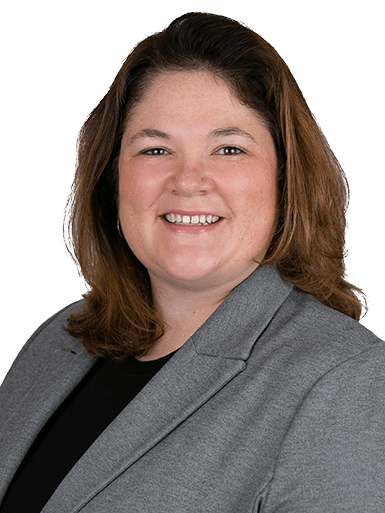Paycheck Protection Program Loans: Tracking Costs
AAFCPAs has provided the following guidance and a tracking template to ensure clients who secured a Paycheck Protection Program (PPP) loan or are currently pursuing the loan are maximizing their opportunity for debt forgiveness.
Maximum Loan Value Calculation
Clients are advised to assess and familiarize yourself with the calculation of the maximum loan value used in the application process. If the calculation was done in alignment with the Small Business Administration (SBA) guidance, in theory the loan should cover about ten weeks of qualified wages and benefits for qualified employees.
However, AAFCPAs cautions clients that the forgiveness calculation is not that straight forward. For example, qualified forgivable expenses are only measured over an eight-week period (the covered period) from the date PPP funds are received. This leaves two weeks’ worth of payroll expenses loaned, but not included in the covered period. These excess loan funds are designed to be used for other qualifying expenses, including mortgage interest on pre-existing debt, and qualified lease and utility payments.
Forecasting and Optimizing Forgiveness
In order to maximize the use of funds and loan forgiveness under the requirements of the CARES Act, AAFCPAs advises clients to implement tracking mechanisms and recordkeeping, and to draft detailed financial forecasts of qualified expenses.
The forgiveness calculation is a two-step approach:
- Tally all eligible costs incurred during the covered period. These costs include wages limited to no more than $15,385 per employee for the covered period, certain employee benefits, and allowable rent, utilities, and interest expenses on pre-existing mortgages. All expenses incurred and/or paid should be compared to the SBA requirements for eligibility. There may also be other considerations as to the eligible costs, such as offsetting revenues (see “other questions to consider” below).On May 15, 2020, an alternate covered period was defined and made available for payroll costs.>>
- Calculate any potential reduction in the forgivable portion of the loan given three criteria:
- A full-time equivalent (FTE) ratio must be applied which compares average FTEs employed historically, as defined in the CARES Act, to the covered period. The intent of the FTE ratio calculation is to ensure employees are retained or re-hired during the covered period. If covered period FTEs are greater than, or match historical FTEs, there may be no reduction in forgiveness for this criterion.
- A direct reduction of forgiveness in the amount equal to any qualified employee wages reduced more than 25% compared to historical wages as defined in the CARES Act.
- Though not defined in the CARES Act, the SBA has clarified that costs applied against the loan should be at least 75% payroll-related, with the remaining 25% representing the other eligible costs defined above (rent, utilities, and mortgage interest). If this criterion is not met, a portion of the loan may not be forgiven.
Please note, further guidance has been provided by the SBA in their PPP Loan Forgiveness Application & Instructions>>.
Do not wait until the covered period has passed to determine potential forgiveness, but instead use the steps outlined above to forecast the use of funds and any potential scenarios which may maximize the use of those funds.
How to Track the Use of PPP Funds
The funds may be subject to scrutiny by the SBA or the lender, therefore, AAFCPAs advises clients to maintain detailed transactional reporting of cash outlays and expenses. The SBA does not define how costs should be tracked. AAFCPAs recommends the following management techniques:
- A spreadsheet tallying all qualified cash expenditures by week for the covered period. Backup documents should also be kept substantiating any expenditures, including payroll journals and copies of insurance, rent, and utility disbursements made.
- Create a separate class or program in your general ledger system to track qualified expense activity. This method allows for management of expenditures by funding source to ensure costs are not double counted against existing funding sources.
- It may be prudent to track the cash received from the PPP loan in a separate bank account to allow for ease of audit. Transfers can be made to operating or payroll accounts in order to reimburse for qualified expenses incurred.
AAFCPAs has expertise in reporting multi-funded program activity and experience with various general ledger packages. We are available to provide guidance on PPP activity tracking allowing you to maximize your efficiency so you may focus your efforts on running your business.
Submit the form below to download AAFCPAs’ Cost Tracking Template, used for tracking costs over the 8-week or 24-week covered period>>
Other questions to consider:
- How are federal and state contracts affected by the qualified expenditures under the PPP program? i.e. Are you positioned to maximize funding sources against operational costs?
- The PPP loan should be accounted for and treated as a loan until any forgiveness is approved by the lender. Recheck existing loan covenants now for any potential conflicts.
- Expenditures were defined under the CARES Act as expenses incurred and paid during the covered period. The forgiveness loan application instructions provide some clarity on costs that may fall outside the traditional covered period.
- It may not be permissible to pre-pay certain qualified expenditures in order to maximize loan forgiveness.
- Certain expenditures may not qualify as eligible if they are paid to a related party who is also claiming the expense in a separate PPP loan.
Other Funding Options Under the CARES Act
If your company does not qualify for the PPP funding, there are still options to consider under the CARES Act. For example, deferral of the employer’s share of social security taxes can preserve a significant amount of cash flow in 2020 and 2021. Learn more about Payroll Tax Credits and other COVID-19 Payroll-Related Benefits. >> Clients are advised to consider eligibility for payroll-related benefits in relation to other federal programs, including the Loan Programs.
AAFCPAs advises clients to consider all available options and to assess which one(s) are best for your circumstances.
HOW MAY AAFCPAs HELP?
AAFCPAs understands how complicated this constantly changing environment is. We have formed a COVID-19/CARES Act Task Force dedicated to studying and advising clients on the business implications of new legislation and the changing business dynamics caused by the Coronavirus.
The benefits outlined above require thoughtful planning and will vary depending on your company’s situation. We can help you understand what is available, what to apply for and how. This includes guidance on calculations needed to determine which SBA loan program may be most beneficial.
If you have any questions or need assistance, please contact Courtney McFarland, CPA, MSA at 774.512.4051, cmcfarland@nullaafcpa.com; Janice O’Reilly, CPA, CGMA, 774.512.9046, joreilly@nullaafcpa.com; or your AAFCPAs Partner.
Fill out the form below to download AAFCPAs’ Cost Tracking Template used for tracking costs over the 8-week or 24-week covered period:


